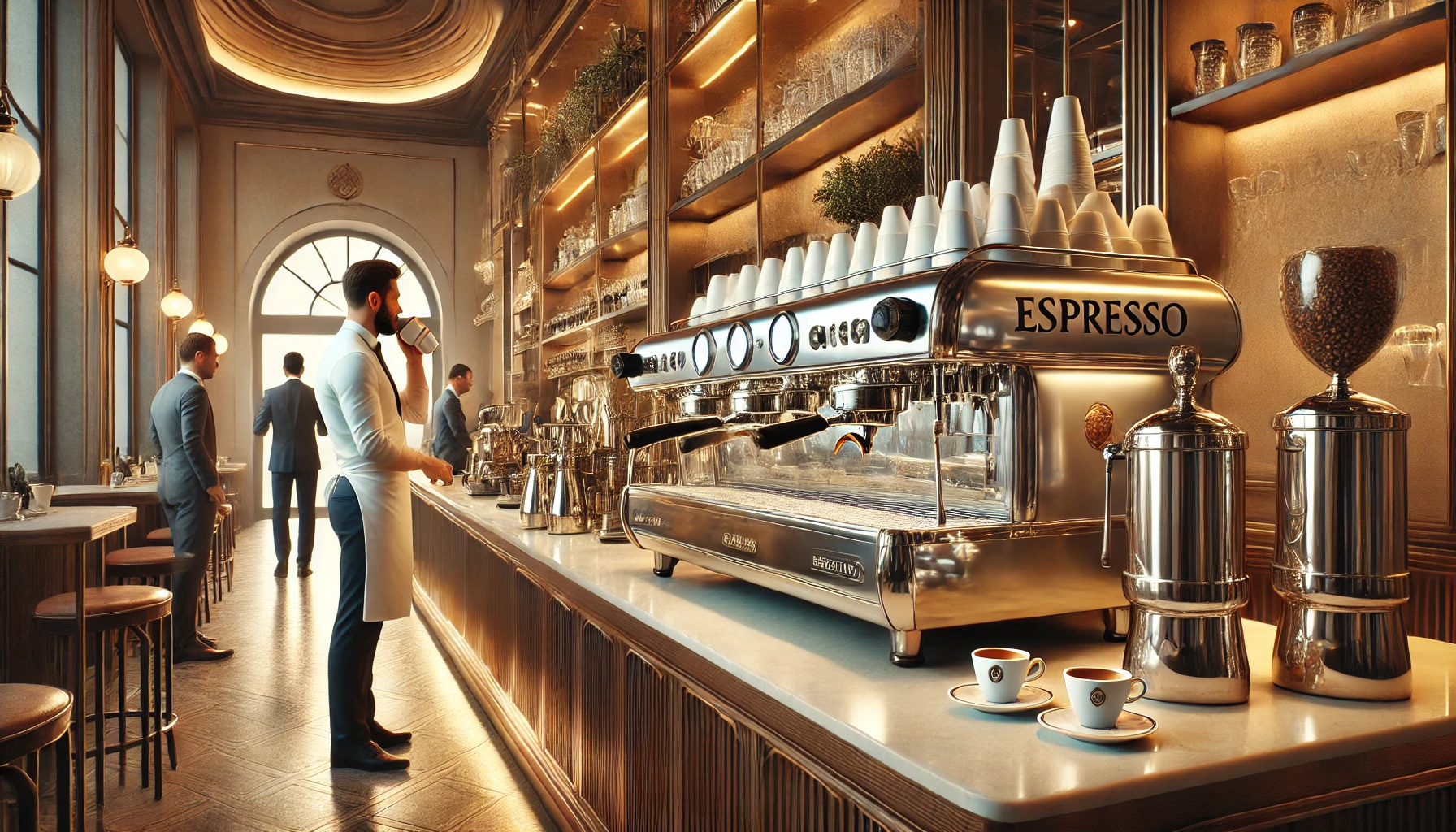Italy is often considered the spiritual home of espresso and the birthplace of modern café culture. But Italian coffee culture is more than just a style of brewing—it’s a deeply rooted ritual, a symbol of national identity, and a carefully curated experience.
In this article, we’ll explore how coffee became embedded in Italian life, how it influenced global coffee habits, and why Italy remains a touchstone for elegance and innovation in the coffee world.
A Late Arrival, but a Lasting Impact
While coffee entered Europe in the 17th century through ports like Venice, Italy’s coffee culture didn’t take off immediately. It wasn’t until the 18th and 19th centuries that Italy fully embraced coffee—and when it did, the country reinvented the experience.
Venice, a cosmopolitan city with close trade ties to the Ottoman Empire, was one of the first Italian cities to import coffee. The first public coffeehouse in Italy, Caffè Florian, opened in 1720 on Venice’s Piazza San Marco. It still operates today, making it one of the oldest cafés in the world.
From there, the Italian coffee tradition spread, gaining momentum and refinement over the next two centuries.
The Invention of the Espresso
The true revolution in Italian coffee came in the early 20th century with the invention of the espresso machine. In 1901, Milanese inventor Luigi Bezzera patented a machine that used steam pressure to force water through finely ground coffee, producing a small, concentrated shot.
This new method was faster, bolder, and more aromatic than traditional brewing. It also introduced an essential element: the crema—a layer of golden foam that forms on top of a well-pulled espresso shot, considered a hallmark of quality.
Espresso was a game changer. It became the foundation for drinks like cappuccino, macchiato, ristretto, and latte. These weren’t just beverages—they were cultural expressions.
The Bar: Italy’s Temple of Coffee
In Italy, coffee is not typically enjoyed in a “café” or “coffee shop,” but in a bar—a bustling, social space that serves espresso, pastries, and sometimes alcoholic drinks.
Italian bars are a pillar of daily life. People visit them multiple times a day—for a quick morning espresso, an afternoon macchiato, or even an evening decaf. The interaction is brief but meaningful: a greeting, a sip, and a return to daily life.
There is a beautiful efficiency to this ritual. Espresso is usually consumed standing at the counter, often accompanied by a short exchange with the barista. It’s not about lingering—it’s about a moment of pause, refinement, and connection.
Rules of the Ritual
Italian coffee culture is full of unspoken rules and etiquette. To outsiders, these may seem rigid, but to Italians, they represent respect for tradition.
Some of the most notable include:
- No cappuccino after 11 AM – Milk-based drinks are considered too heavy to consume after breakfast.
- Espresso is just “caffè” – If you ask for a coffee in Italy, you’ll get an espresso.
- Don’t order a “latte” – Unless you want a glass of milk. Say “caffè latte” instead.
- No take-away – Coffee is meant to be enjoyed fresh, in its moment, not carried around.
These customs reflect the Italian belief in savoring life—even in its smallest rituals.
Regional Variations
While espresso culture is national, regional coffee preferences vary across Italy:
- In Naples, espresso is famously strong and intense. It’s often sweetened before being served, and brewed using traditional Neapolitan flip pots as well as machines.
- In Trieste, near the Slovenian border, coffee culture is influenced by Austro-Hungarian traditions, with drinks like capo in B (macchiato in a glass) being local favorites.
- In Turin, bicerin is a beloved drink that layers espresso, hot chocolate, and cream in a glass.
These regional identities add flavor—both literal and cultural—to Italy’s coffee landscape.
Design, Aesthetics, and the Coffee Experience
Italian coffee culture is not just about taste—it’s about form, function, and style. This is reflected in:
- Espresso cups: Small, thick porcelain designed to retain heat.
- Stainless steel counters: Sleek and efficient workspaces.
- La macchina: The espresso machine, often designed with beauty and precision in mind.
Italian brands like Illy, Lavazza, Gaggia, and La Marzocco have become global symbols of quality and elegance in coffee preparation.
Even home brewing has its icon: the Moka pot, invented in 1933 by Alfonso Bialetti. This stovetop espresso maker became a staple in Italian kitchens and has since sold over 300 million units worldwide.
Coffee as Social Identity
In Italy, coffee is deeply tied to concepts of community, style, and routine. It’s not just what you drink—it’s how you drink it, where you drink it, and with whom.
Coffee is part of:
- First dates
- Business meetings
- Family traditions
- Solo morning reflections
There is pride in being a “regular” at your neighborhood bar. The barista often knows your name, your order, and how you like your foam. This relationship is both personal and cultural.
Influence on Global Coffee Culture
Italian coffee culture has profoundly shaped how the world drinks coffee. From the Starbucks espresso menu to boutique cafés in Tokyo and Melbourne, Italy’s legacy is evident.
Many of today’s most popular drinks—latte, cappuccino, macchiato—are directly adapted from Italian traditions. The aesthetic of the espresso bar, with its polished equipment and fast-paced service, also comes from Italy.
Even café terminology worldwide is still spoken in Italian—a testament to its cultural reach.
Challenges and Preservation
While Italy’s coffee traditions remain strong, they face challenges:
- Globalization has brought new trends, like to-go coffee and flavored syrups, which contrast with traditional practices.
- Younger generations may be drawn to modern cafés and third-wave trends.
- Tourism sometimes pressures bars to adapt menus and customs for foreign tastes.
Despite this, Italy has fiercely defended its heritage. In 2022, Italy nominated espresso culture for UNESCO Intangible Cultural Heritage status, recognizing its national importance.
Final Sip: Espresso as Essence
Italian coffee culture is not just about caffeine—it’s about precision, beauty, tradition, and human connection. It represents a moment of indulgence, a celebration of daily life, and a respect for the art of simplicity.
When you sip an espresso in Italy—or anywhere that honors its tradition—you’re participating in a legacy that spans centuries. It’s small, it’s strong, and it says everything in a single, perfect shot.

